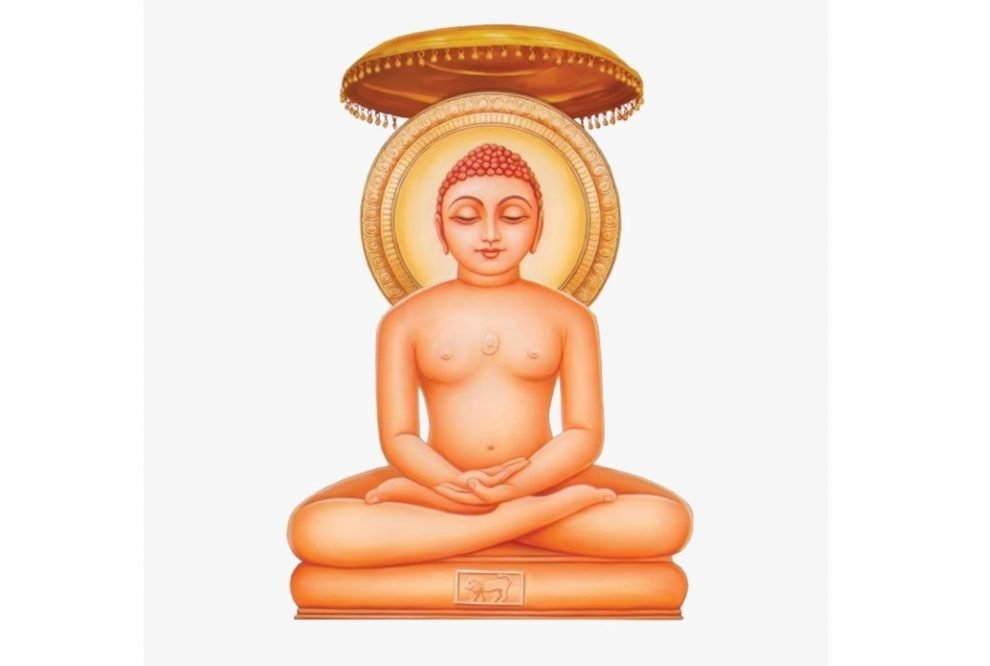Jainism is an ancient religion from India that teaches a human to lead the path of liberation and bliss by living a life of simplicity and renunciation of worldly pleasures.
The objective of a Jain follower is to obtain the release of the soul. The name comes from jiva (soul or life force but, is also given as Spiritual Conqueror) as it holds that all living things possess an immortal soul which has always and will always exist and that one’s soul may be liberated from suffering by self-discipline in adhering to Jain tenets. It originated in Northern India and extended its reach towards the south, but its emergence is yet not clear to date.
Its founder is often, identified as the sage Vardhamana (better known as Mahavira, l. c. 599-527 BCE), but he originally was only the 24th Tirthankara (“ford builder”) of Jainism. Similar to Hinduism, Jains hold that their principles are eternal, recognized by 23 sages down through time, to finally be established by Mahavira in its present form.
It is a religion that does not worship or believe in the existence of particular gods as in Hinduism. It does not promote a belief in a primary creator god but rather in higher beings (devas), who are mortal, and in the idea of karma administering one’s present life and future incarnations; the devas have no power over a person, however, and are not sought for guidance or assistance in freeing one’s self from karmic bondage. In Jainism, it is up to each individual to obtain salvation – defined as release from the cycle of rebirth and death (samsara) – by following a severe spiritual and disciplinary code of behavior. This code is based on the Five Vows (mentioned in the elemental work, the Tattvartha Sutra):
- Ahimsa (Non-violence)
- Satya (Honesty)
- Asteya (Abstain from Stealing)
- Brahmacharya (celibacy or loyalty to spouse)
- Aparigraha (Detachment)
The Five Vows guides one’s thoughts and behavior since it is believed that one’s action is driven by his thinking. Therefore, to simply abstain from even thinking of vices like violence or lying or stealing let away thinking, one must hold fast to this discipline, one will escape the cycle of samsara and achieve salvation. Once one has accomplished this, he becomes a Tirthankara, a “ford builder” (as in, one who builds a ford or bridge over a river) who can guide others as to how to cross the complex path of life by getting rid of desires, liberating himself from ignorance and rejecting the inclinations of the world. In Jainism, suffering is caused by ignorance of the true nature of reality, and liberation is achieved through spiritual experience and living with the truth he has realized.
Mahavira’s progress of faith was in response to a general religious reform as a response to Hinduism, the dominating faith at that time, which some thinkers felt was out of touch with the people’s spiritual and physical requirements in India, at 5th and 4th century B.C. Moreover, Jainism, there were many other philosophies or religious systems developed at this time (including Charvaka and Buddhism) which flourished for a time and then either gained ground or failed. Jainism was able to survive and attract followers through royal support of political rulers in the Mauryan Empire (322-185 BCE. Later on, Jainism survived deep oppressions under various Muslim rulers from the 12th-16th centuries CE, and also withstood efforts of Christian missionaries in the 19th century CE to continue as a high spirited faith till now. As a result of persistent persecution by foreign invaders, Jainism is practiced in very limited areas of the country.
















Add Comment